
Ballroom dance is a set of partner dances, which are enjoyed both socially and competitively around the world, mostly because of its performance and entertainment aspects. Ballroom dancing is also widely enjoyed on stage, film, and television.

East Coast Swing (ECS) is a form of social partner dance. It belongs to the group of swing dances. It is danced under fast swing music, including rock and roll and boogie-woogie.
The Carolina shag is a partner dance done primarily to beach music. Today, the shag is a recognized dance in national and international dance competitions.
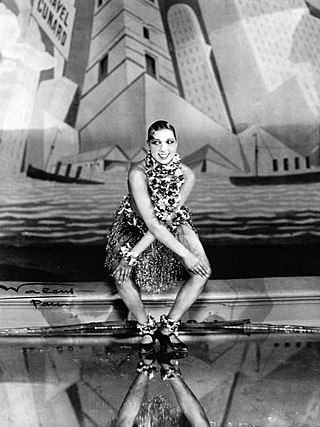
The Charleston is a dance named after the harbor city of Charleston, South Carolina. The rhythm was popularized in mainstream dance music in the United States by a 1923 tune called "The Charleston" by composer/pianist James P. Johnson, which originated in the Broadway show Runnin' Wild and became one of the most popular hits of the decade. Runnin' Wild ran from October 28, 1923, through June 28, 1924. The peak year for the Charleston as a dance by the public was mid-1926 to 1927.
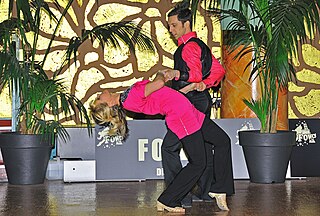
West Coast Swing is a partner dance with roots in the Lindy Hop. It is characterized by an elastic look that results from its extension-compression technique of partner connection and is danced primarily in a slotted area on the dance floor. The dance allows for both partners to improvise steps while dancing together, putting West Coast Swing in a short list of dances that emphasize improvisation.

Swing dance is a group of social dances that developed with the swing style of jazz music in the 1920s–1940s, with the origins of each dance predating the popular "swing era". Hundreds of styles of swing dancing were developed; those that have survived beyond that era include Lindy Hop, Balboa, Collegiate Shag, and Charleston. Today, the best-known of these dances is the Lindy Hop, which originated in Harlem in the early 1930s. While the majority of swing dances began in African-American communities as vernacular African-American dances, some influenced swing-era dances, like Balboa, developed outside of these communities.
Swing music is a style of jazz that developed in the United States during the late 1920s and early 1930s. It became nationally popular from the mid-1930s. The name derived from its emphasis on the off-beat, or nominally weaker beat. Swing bands usually featured soloists who would improvise on the melody over the arrangement. The danceable swing style of big bands and bandleaders such as Benny Goodman was the dominant form of American popular music from 1935 to 1946, known as the swing era. The verb "to swing" is also used as a term of praise for playing that has a strong groove or drive. Musicians of the swing era include Duke Ellington, Benny Goodman, Count Basie, Cab Calloway, Jimmy Dorsey, Tommy Dorsey, Woody Herman, Harry James, Lionel Hampton, Glenn Miller, Artie Shaw and Django Reinhardt.
Shag, or Shagged, or Shagger, or Shagging, or Shags may refer to:
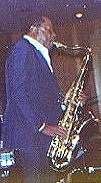
Edward F. Davis, known professionally as Eddie "Lockjaw" Davis, was an American jazz tenor saxophonist. It is unclear how he acquired the moniker "Lockjaw" : it is either said that it came from the title of a tune or from his way of biting hard on the saxophone mouthpiece. Other theories have been put forward.
There is great variety in dance in the United States of America. It is the home of the hip hop dance, salsa, swing, tap dance and its derivative Rock and Roll, and modern square dance and one of the major centers for modern dance. There is a variety of social dance and concert or performance dance forms with also a range of traditions of Native American dances.
The Texas Tommy is a vigorous social dance for couples that originated in San Francisco in the early twentieth century.
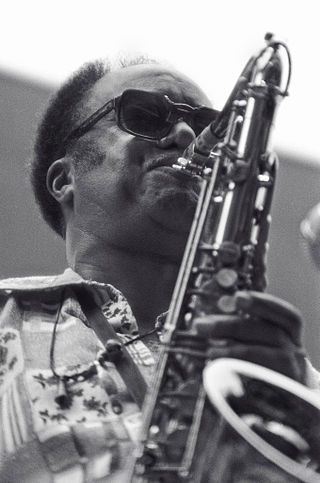
Ernest Brooks Wilkins Jr. was an American jazz saxophonist, conductor and arranger who spent several years with Count Basie. He also wrote for Tommy Dorsey, Harry James, and Dizzy Gillespie. He was musical director for albums by Cannonball Adderley, Dinah Washington, Oscar Peterson, and Buddy Rich.
Keith Ronald Christie was an English jazz trombonist. He was the brother of Ian Christie.
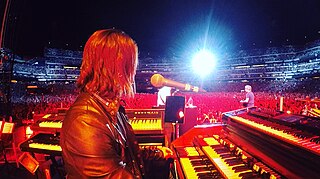
Loren Gold is an American keyboardist, vocalist, music director, and songwriter. Gold is the keyboardist and backup vocalist for The Who, and keyboardist/vocalist for the band Chicago. In addition, Loren has been the touring keyboardist and backup vocalist for Roger Daltrey since 2009. Loren also performs with Rita Wilson, and has toured regularly with Don Felder since 2009. Other artists he has toured with include Kenny Loggins, Natalie Maines, and American Idol winner Taylor Hicks. Gold has been musical director for pop stars Selena Gomez, Demi Lovato, and Hilary Duff, and he continues to build and develop bands for other artists. Gold has published two instructional books through his collaboration with Alfred Music, and his original compositions have been featured on HBO and Showtime.

The Lindy Hop is an American dance which was born in the Black communities of Harlem, New York City, in 1928 and has evolved since then. It was very popular during the swing era of the late 1930s and early 1940s. Lindy is a fusion of many dances that preceded it or were popular during its development but is mainly based on jazz, tap, breakaway, and Charleston. It is frequently described as a jazz dance and is a member of the swing dance family.
The Collegiate Shag is a partner dance done primarily to uptempo swing and pre-swing jazz music. It belongs to the swing family of American vernacular dances that arose in the 1920s and 30s. It is believed that the dance originated within the African American community of the Carolinas in the 1920s, later spreading across the United States during the 1930s. The shag is still danced today by swing dance enthusiasts worldwide.

A Study in Frustration: The Fletcher Henderson Story is a box set compilation surveying studio recordings of the Fletcher Henderson Orchestra from 1923 to 1938, released in 1961 on Columbia Records, CXK 85470. It initially appeared as a four-album set produced by Frank Driggs and assembled by John Hammond, both of whom also wrote the liner notes. The set was part of a Thesaurus of Classic Jazz series on Columbia which included King of the Delta Blues Singers also worked on by Hammond and Driggs and released in 1961, the first album reissue of songs by blues legend Robert Johnson.









